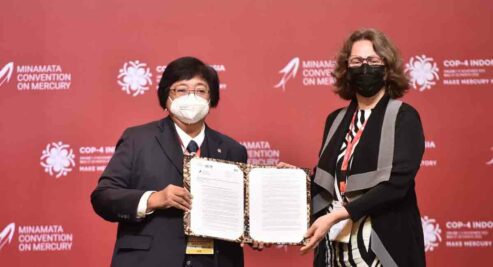Explainer: Mercury pollution and its harmful effects on environment
Mercury occurs naturally in the earth’s crust, but human activities, such as mining and fossil fuel combustion, have led to widespread global mercury pollution. Mercury emitted into the air eventually settles into water or onto land where it can be washed into water.
Updated On - 18 January 2025, 01:06 PM
Hyderabad: Mercury (Hg) is a global pollutant that affects human and ecosystem health. Exposure to mercury threatens our health, with many often irreversible toxic effects. Developing fetuses and young children are most at risk. Mercury pollution also harms wildlife and ecosystems. Read here more about mercury pollution and how harmful it is to the environment.
Mercury occurs naturally in the earth’s crust, but human activities, such as mining and fossil fuel combustion, have led to widespread global mercury pollution. Mercury emitted into the air eventually settles into water or onto land where it can be washed into water.
Once deposited, certain microorganisms can change it into methylmercury, a highly toxic form that builds up in fish, shellfish and animals that eat fish. Almost all people in the world have at least trace amounts of methylmercury in their tissues, reflecting its pervasive presence in the environment. Some communities eat significantly more quantities of fish than the general population, and thus may be exposed to much greater mercury contamination than the general population.
Mercury is considered by the World Health Organisation (WHO) as one of the top ten chemicals or groups of chemicals of major public health concern.
Regulation of mercury use

Indonesia has introduced a global declaration that calls on parties to the Minamata Convention on Mercury to tackle illegal trade of mercury. The declaration was read in Nusa Dua, Bali, where Indonesia is hosting the fourth Conference of Parties (COP4) to the Minamata Convention on Mercury. The conference was held from 21 to 25 March 2022.
Minamata Convention on Mercury
- The Minamata Convention on Mercury is a global treaty to protect human health and the environment from the adverse effects of mercury and its compounds.
- It was agreed at the fifth session of the Intergovernmental Negotiating Committee in Geneva, Switzerland 2013.
- Countries that have ratified the Convention are bound by international law to put these controls in place. India has ratified the Convention.
Objectives of the Declaration
The non-binding declaration calls upon parties to:
- Develop practical tools and notification and information-sharing systems for monitoring and managing trade in mercury.
- Exchange experiences and practices relating to combating illegal trade in mercury, including reducing the use of mercury in artisanal and small-scale gold mining.
- Share examples of national legislation and data and information related to such trade.
Sources of mercury
- Natural sources: Volcanic eruptions and emissions from the ocean.
- Anthropogenic (human-caused) emissions: It includes mercury that is released from fuels or raw materials, or from uses in products or industrial processes. Globally, Artisanal and Small-Scale.
- Gold Mining (ASGM): It is the largest source of anthropogenic mercury emissions (37.7%), followed by stationary combustion of coal (21%).
Now you can get handpicked stories from Telangana Today on Telegram everyday. Click the link to subscribe.
Click to follow Telangana Today Facebook page and Twitter .